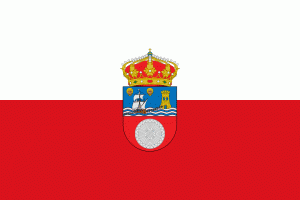Cantabria
 |
 |
Cantabria belongs to Green Spain, the name given to the strip of land between the Bay of Biscay and the Cantabrian Mountains, so called because of its particularly lush vegetation, due to the wet and moderate oceanic climate. The climate is strongly influenced by Atlantic Ocean winds trapped by the mountains; the average annual precipitation is about 1,200 mm.
Cantabria has archaeological sites from the Upper Paleolithic period, although the first signs of human occupation date from the Lower Paleolithic. The most significant site for cave paintings is that in the cave of Altamira, dating from about 37,000 BC and declared, along with nine other Cantabrian caves, as World Heritage Sites by UNESCO. Historically, the territory sits in the Ancient Period Cantabria, but from the Late Middle Ages to the early 19th century, the name Cantabria usually refers to the territory of the Basques, especially the lordship of Biscay.
The modern Province of Cantabria was constituted on 28 July 1778 at Puente San Miguel, Reocín. The yearly Day of the Institutions holiday on 28 July celebrates this. The Organic Law of the Autonomy Statute of Cantabria, approved on 30 December 1981, gave the region its own institutions of self-government.
Numerous authors, including Isidore of Seville, Julio Caro Baroja, Aureliano Fernández Guerra and Adolf Schulten, have explored the etymology of the name Cantabria, yet its origins remain uncertain. The Online Etymology Dictionary states the root cant- is said to come from the Celtic for "rock" or "rocky", while -abr was a common suffix used in Celtic regions. Thus, Cantabrian could mean "people who live in the rocks" or "highlanders", a reference to the steep and mountainous territory of Cantabria.
The name Cantabria could also be related to the Celtic root "kant" or "cant" meaning edge or rim thus "coastal district," or "corner-land", "land on the edge" thus having the same probable derivation as the name of the English county of Kent and Canterbury, one of its major cities.
During the Spanish liberal regimes of the 19th century, the term came to be increasingly associated to the province of Santander. However, during the late medieval and Modern Period literature, Cantabria and Cantabrians refer to the Basque Country, especially the lordship of Biscay, and the Basques.
Map - Cantabria
Map
Country - Spain
 |
 |
| Flag of Spain | |
Anatomically modern humans first arrived in the Iberian Peninsula around 42,000 years ago. The ancient Iberian and Celtic tribes, along with other pre-Roman peoples, dwelled the territory maintaining contacts with foreign Mediterranean cultures. The Roman conquest and colonization of the peninsula (Hispania) ensued, bringing the Romanization of the population. Receding of Western Roman imperial authority ushered in the migration of different non-Roman peoples from Central and Northern Europe with the Visigoths as the dominant power in the peninsula by the fifth century. In the early eighth century, most of the peninsula was conquered by the Umayyad Caliphate, and during early Islamic rule, Al-Andalus became a dominant peninsular power centered in Córdoba. Several Christian kingdoms emerged in Northern Iberia, chief among them León, Castile, Aragon, Portugal, and Navarre made an intermittent southward military expansion, known as Reconquista, repelling the Islamic rule in Iberia, which culminated with the Christian seizure of the Emirate of Granada in 1492. Jews and Muslims were forced to choose between conversion to Catholicism or expulsion, and eventually the converts were expelled through different royal decrees.
Currency / Language
| ISO | Currency | Symbol | Significant figures |
|---|---|---|---|
| EUR | Euro | € | 2 |
| ISO | Language |
|---|---|
| EU | Basque language |
| CA | Catalan language |
| GL | Galician language |
| OC | Occitan language |
| ES | Spanish language |
















